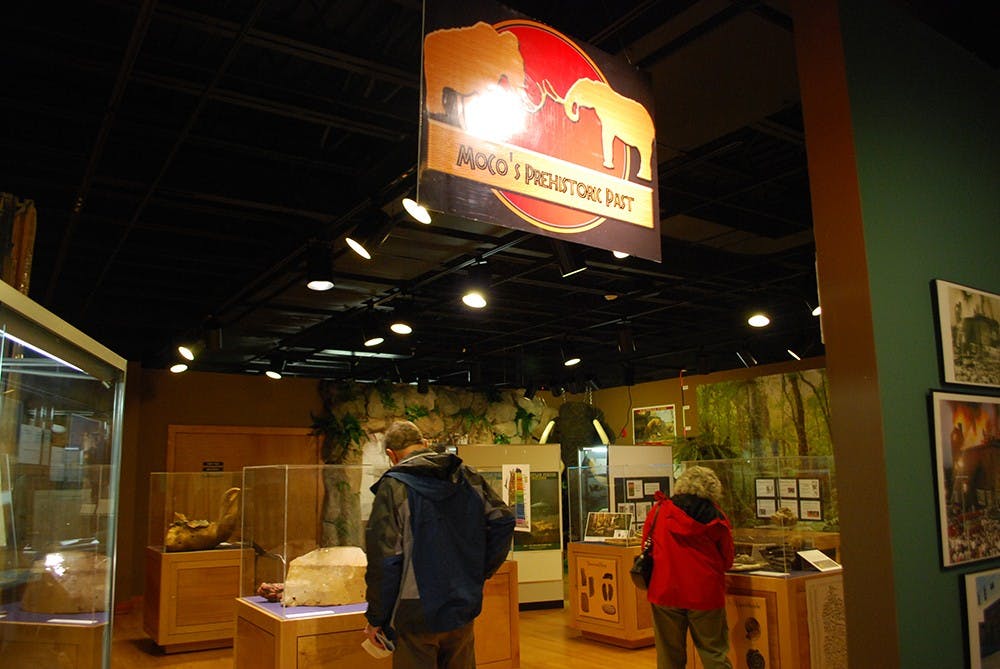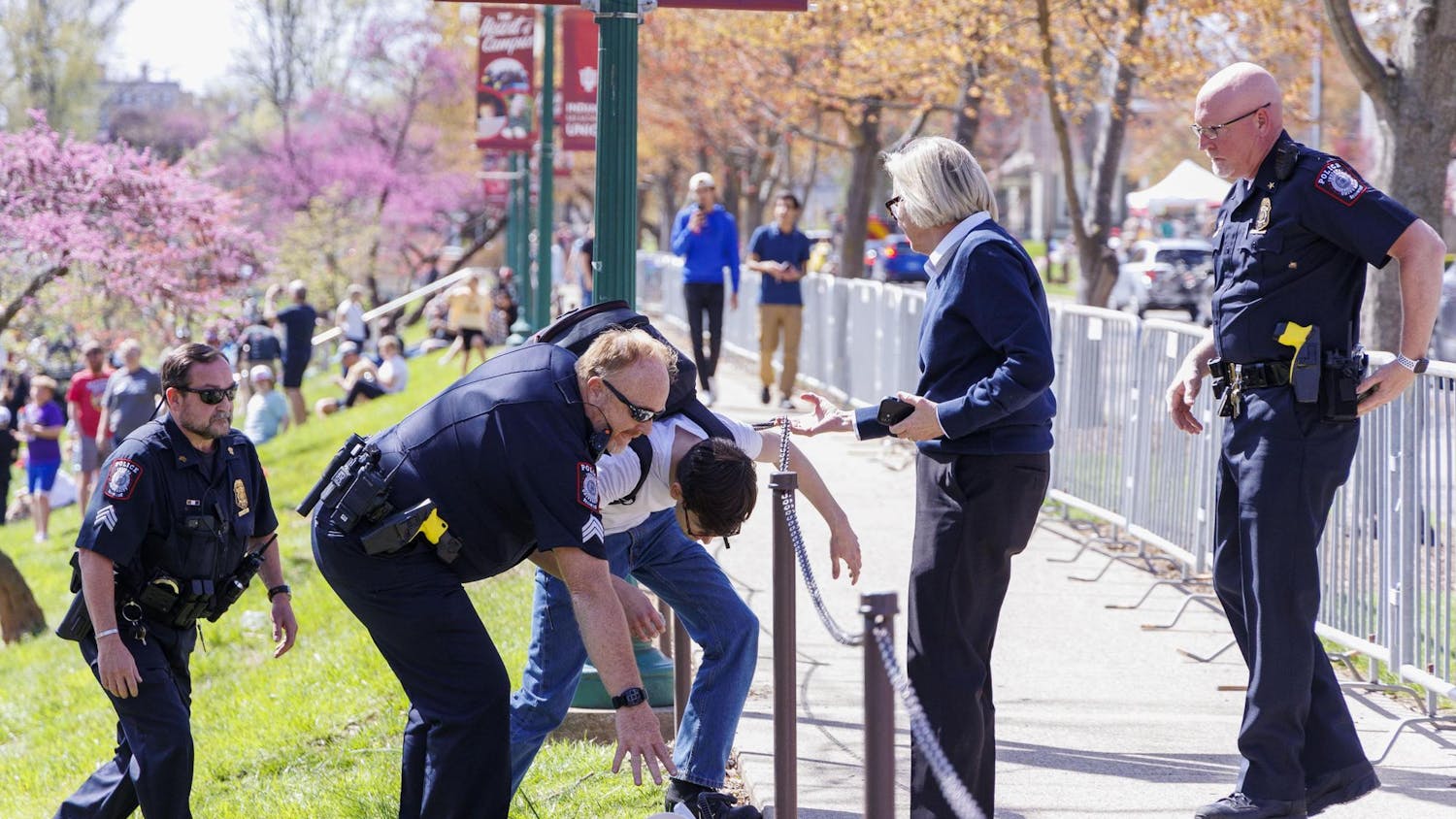Those in attendance were able to experience prehistoric Monroe County from the Cambrian period of the earliest underwater dwellers to the Quaternary period of the first American hunters.
“Everything here represents the natural history or formation of the county,” exhibits manager Jenny Mack said. “We have even the tiniest animals that were here 400 million years ago to items and animals that were here from the ice age, about 10,000 years ago.”
On display were dozens of fossils. There were geodes and calcite, which had brilliant hues of orange and purple, and plants, now brown from fossilization.
There were smaller things, such as the plant-like crinoid , and there were bigger things, like the cracked jaw of the American ?mastodon.
Some of the displays even seemed to have links to contemporary popular culture, like the skull of the dire wolf.
“It’s pretty cool if you follow Game of Thrones at all,” Mack said. “People can actually see that dire wolves were real at one point and that we actually have skulls.”
Despite the lapse of time between their deaths and present day, these fossils still remain in the area, which Mack said is one of the event’s “cooler” concepts.
“It’s just a really cool examination of the different minerals and fossils that people can still find today in their driveways or walking along a forest path,” she said.
Prior to the exhibition, Walter Gray , an education outreach coordinator with the Indiana Geological Survey , lectured those in attendance about the fossils of Indiana.
He shunned those who came for the dinosaurs because, as he said, dinosaurs didn’t live in Indiana.
“The fossils are an indicator of what life was like,” he said. “They paint a ‘paleopicture’ that’s sort of like a fusion of art and science.”
He also said it is important to teach the subject of paleontology for several reasons, such as evolution and the location of petroleum.
The event was organized primarily by Mack, with several contributions coming from the Indiana Geological Survey and IU’s own Glenn Black Laboratory of Archaeology. She said planning for the exhibit started about six or seven months ago.
The Monroe County Fossil exhibit is in the Brown Room of the History Center on East Sixth Street. The gallery will remain open through March 2015.






